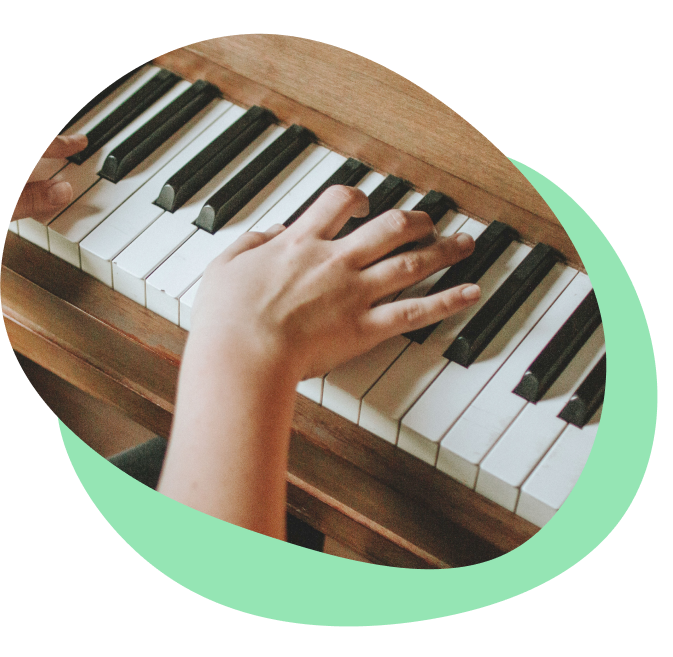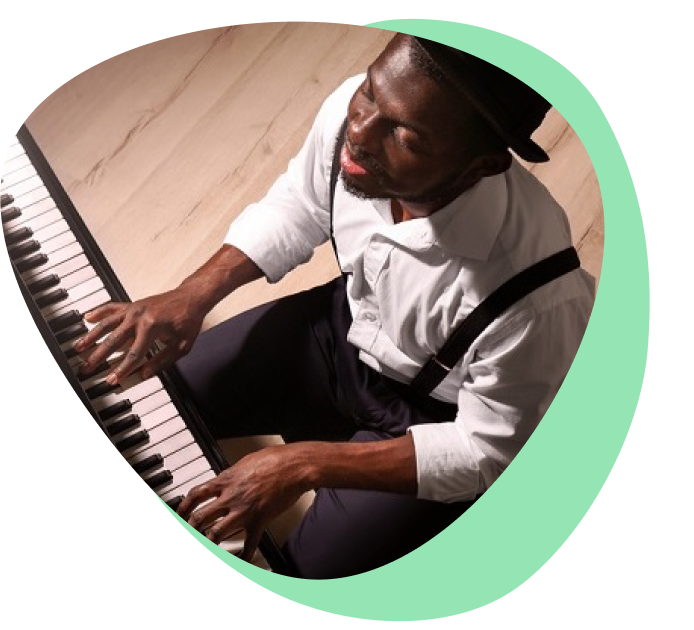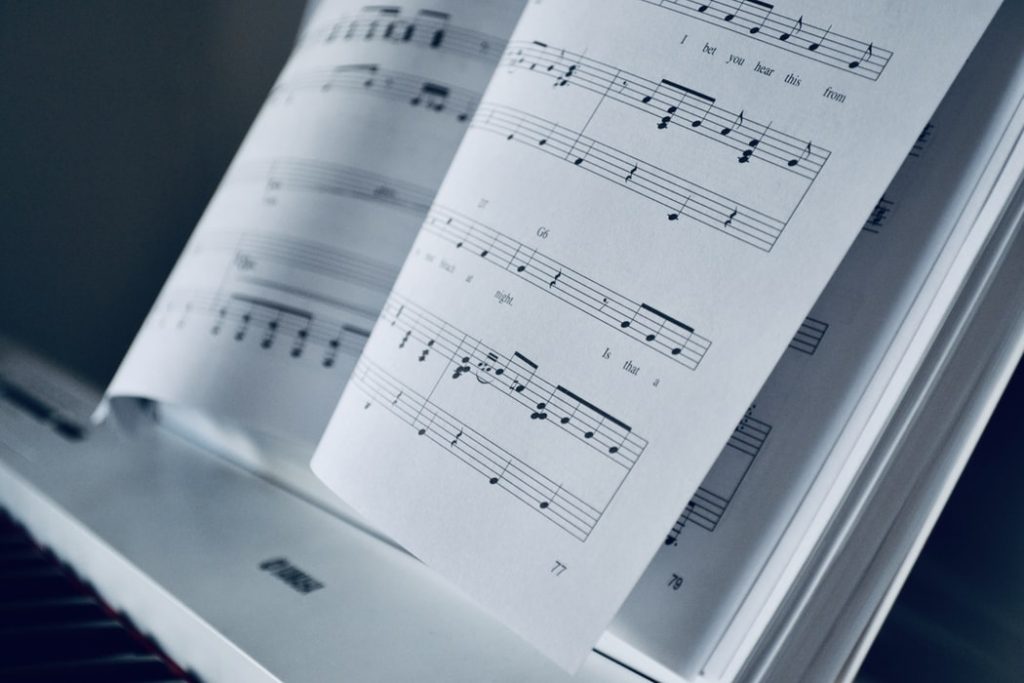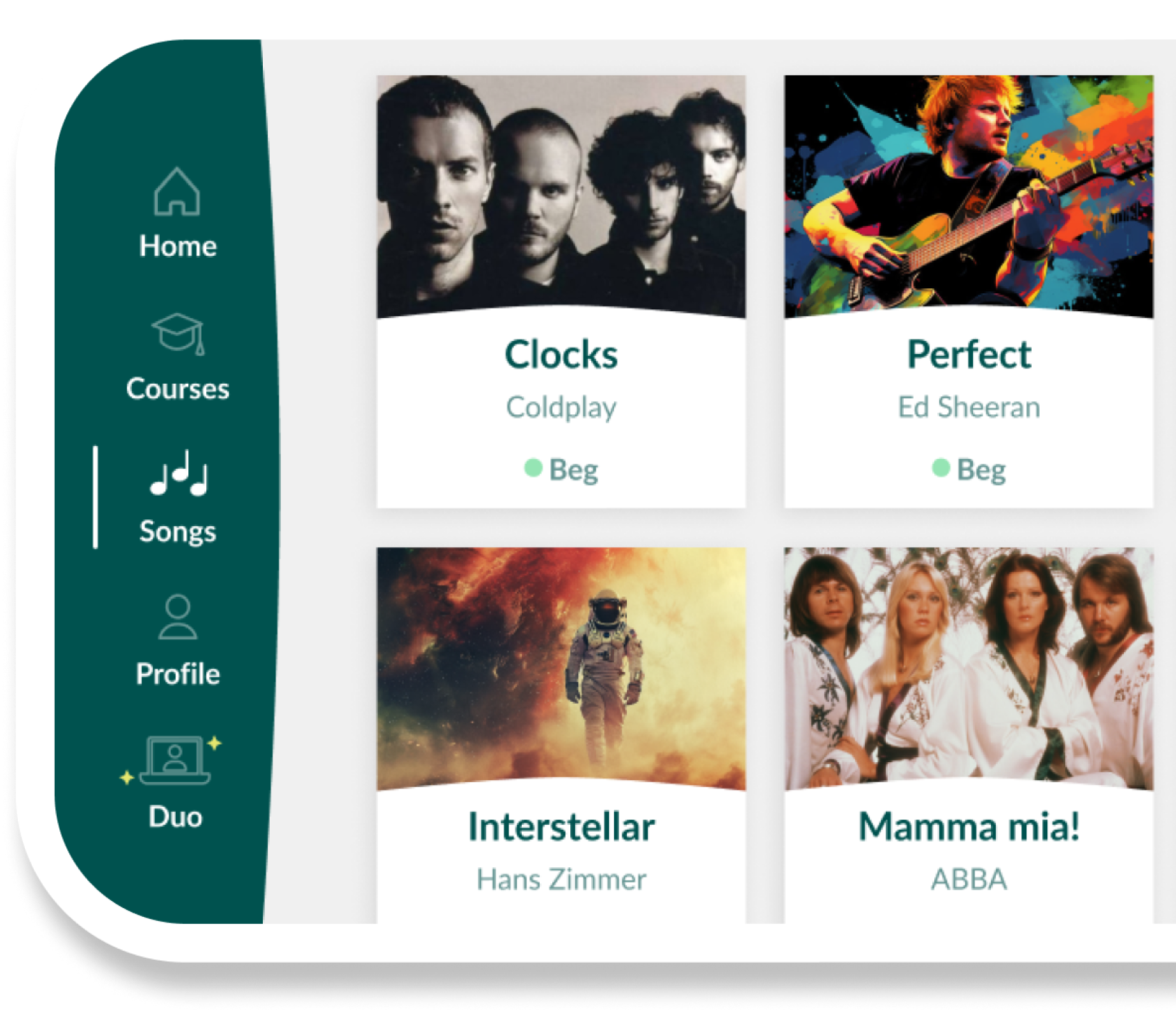What is a grand staff in piano?
The grand staff is the combination of treble and bass clef, joined together with a bracket. It looks like this:

The grand staff or grand stave is a musical staff used to notate piano music frequencies of notes. It is an effective way to divide what the left and right hand play. It is an important concept to understand when you learn to read music. It is especially important to know if you need to sight read music.
The music notated in the treble clef is usually performed with the right hand and the music notated in the bass clef is performed with the left hand. In grand staff music you will find examples where your hands cross or overlap, but those are usually in more advanced piano music.
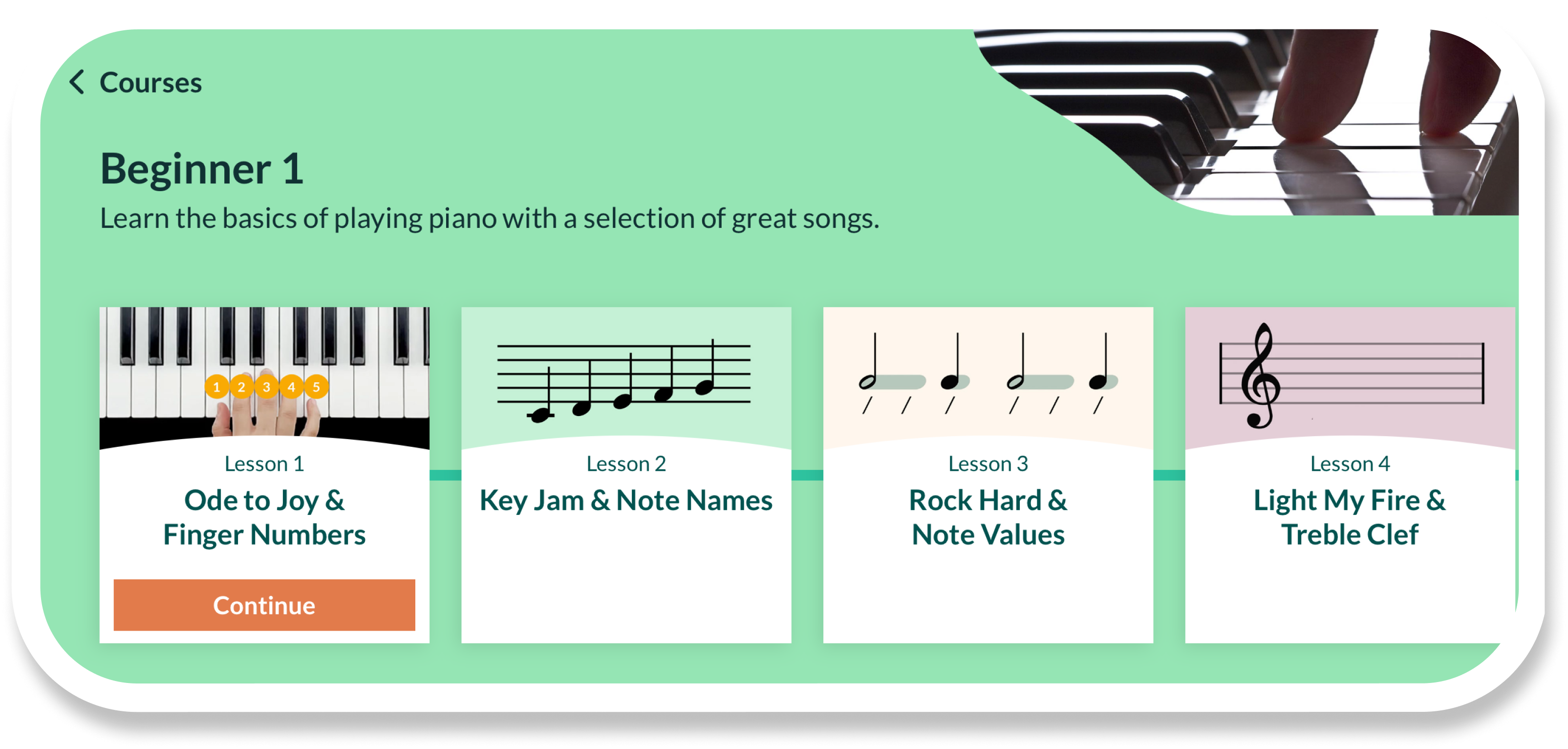
Grand staff lines and spaces
This raises the question; what is a staff in music? The lines and spaces of the grand staff show musicians what pitches to play. These five lines for each part of the grand staff are called the staves. The staves of grand staff allows us to understand middle C.

Middle C is on an invisible line in the middle of the grand staff notes. It is called middle C because it is in the middle of the grand staff.
Middle C in treble clef:

Middle C in bass clef:

When we combine the two clefs together into the grand staff, these two notes are in the exact same position, one ledger line above bass clef and one below treble.
Ledger lines are additional lines added to the grand staff to show the notes that extend beyond the piano grand staff, especially useful when reading piano notes that fall above or below the typical range.
Observing the grand staff you will see notes written on ledger lines two or more lines above or below the staff. In the case of ledger lines below the treble clef, we usually notate these pitches in the bass clef and in the case of ledger lines above the bass clef, we could notate these pitches in the treble clef. Notation and use of clefs and ledger lines are heavily dependent on musical context and ease of reading the grand staff in music.
How to read music on the grand staff
Treble clef
The notes on grand staff include both the treble and bass clefs. The notes of the treble staff are simple to memorize if you use mnemonic devices. The treble clef notes are:

Try a helpful mnemonic like “Every Good Boy Deserves Football” to commit these note positions to memory.

You can simply remember the phrase “FACE in the space” to remember these note positions on treble clef.
Bass clef
As with treble clef the lines and spaces of bass clef are likewise quite easy to memorize if you use a mnemonic device. Here are the bass clef notes:

For the lines you can remember “Good Burritos Don’t Fall Apart”.

For the spaces you can remember “All Cows Eat Grass”.
Combining the clefs and the grand staff notes
When we combine both the notes of the treble staff and the staff notes in bass clef, the quarter notes on grand staff look like this:

These notes can come in any form including eighth notes, dotted notes, ties and as passing notes with varying articulation.
Now you have explored what the grand staff has to offer its time to put your knowledge into practice. Skoove can help you master this music theory fundamental with a catalog of songs support and guidance. Happy practicing!
Author of this blog post

Eddie Bond is a multi-instrumentalist performer, composer, and music instructor currently based in Seattle, Washington USA. He has performed extensively in the US, Canada, Argentina, and China, released over 40 albums, and has over a decade experience working with music students of all ages and ability levels.
Published by Lydia Ogn from the Skoove team




